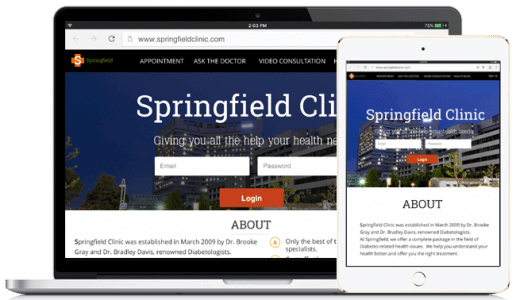“To be, or not to be”
That is truly the question when it comes to patient portal adoption. Interestingly, despite being a decade old, patient portals have not seen the adoption one would expect. A lot has been said about why patient portals are necessary but studies show that a vast majority of hospitals, clinicians and their patients are not using these portals.
This begs the question, is this a failed attempt at doctor-patient engagement?
There is more to it than that. Research also points out that the reason for the poor adoption of patient portals is due to poor usability, unresponsive staff and preference for traditional means of communication (direct, telephone etc.). All this points to the only reason for this apparent lack of adoption- the failure to market patient portals effectively.
How can you ensure adoption of your patient portal?
Broadly, the process of introducing your patient portal can be divided into three stages.
Education
This requires health providers or their staff to actively educate their patients and demonstrate the various uses of the patient portal. For instance, if using a portal tied to EHR, show patients how they can update and view their health records and how new reports can be shared with the clinic or hospital. Another important point to consider here is the need for complete transparency with respect to patient data. Restricting access to vital personal data will not find favour with your patients.

Providing access to complete health records (including physician review notes), giving them the ability to annotate or even customize their portal experience and providing assistance are ways to ensure better portal usage.
The failure to activate patients is one of the key reasons that patient portals fall into disuse. It is a behaviour change, but studies have shown that contrary to popular assumption, healthcare technology adoption is not solely restricted to high-income urban millennials, but is quite actively utilised by senior citizens and those in middle-to-low income brackets as well. They only need to be told about the existence of said technology.
Engagement
Your patient portal should be an extension of your practice.
Patient portal adoption is a two-way street. If you have made the effort to activate patients, it is equally important to have activated clinicians who will respond and engage with patients. Unresponsive staff is likely to cause lack of portal usage. Therefore, rather than spending heavily on state-of-the-art technology, it would be wiser to invest in resources and talent who would meticulously follow-through with patients.

Take time to train physicians at your medical practice. It is crucial to make them aware of the technology, its uses to them and how to convey this to their patients. Getting staff to assist patients on portal use is another key aspect. Staff and provider interaction needs to be consistent. The quality of information and care offered on the patient portal should be consistent with that received during in-clinic visits.
Customization
Once activated and engaged, practices need to looks at ways to improve patient retention. Lack of retention on patient portals can also impact your practice revenue. Therefore, another key aspect of engagement is to update the portal based on patient usage.
A patient portal is never meant to be a static environment.
Patient education is one way to achieve this. Providing informative articles and a library of content that they may otherwise not have access to, is one way to make your patient portal relevant. Your patient portal needs to be patient-centric and should not be seen as solely a clinic management tool. Curated content and health-centred portals are likely to be better received.

Technology upgrades are a necessity for every patient portal. Changing the interface, making improvements based on patient usage and suggestions to improve the overall experience will not go unnoticed. If your patient portal only supports the capability for online health records and/or appointment booking; consider add-ons like a Q&A platform, telehealth services or even a functionality to enable remote monitoring. Adding a payment gateway to your portal also allows patients to reimburse you for such services.
The apparent “failure” of patient portals is not due to the lack of technology know-how. It is simply a lack of willingness by providers and patients to come together to collaborate around health data. This does require a behaviour modification from both parties and a platform that can truly aid meaningful engagement and relevant discussions about healthcare delivery.
The Virtual Practice patient portal aims to serve as a unique patient engagement platform that addresses the need of providers and patients today. It is technology-driven, innovative and user-friendly, allowing for seamless integration into any medical practice. Built to allow collaboration around its shared Personal Health Record (PHR), the portal offers a suite of patient engagement features for online consultations, telehealth and remote care.




